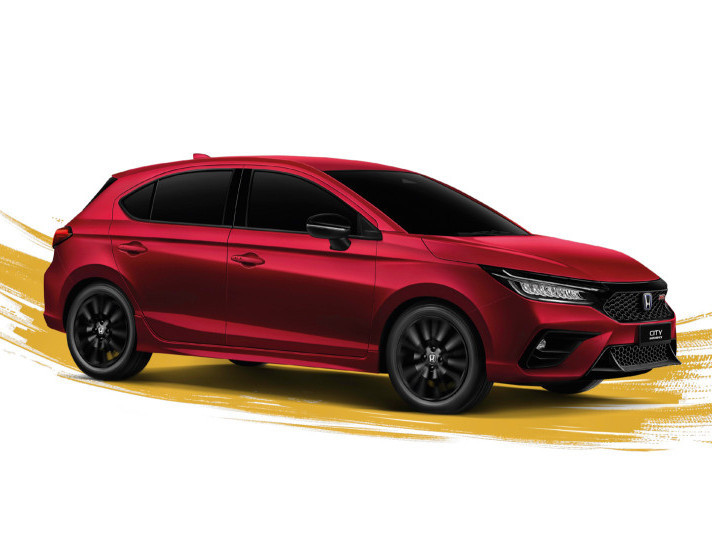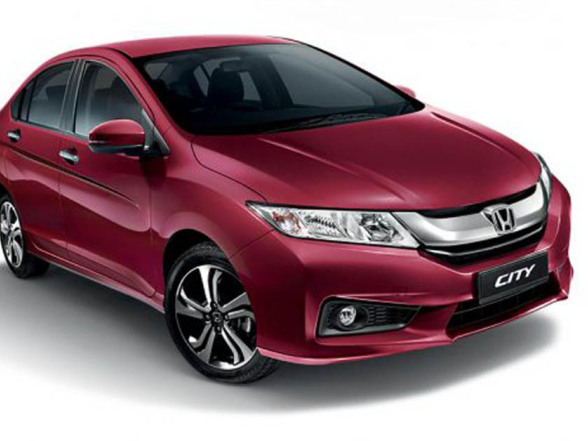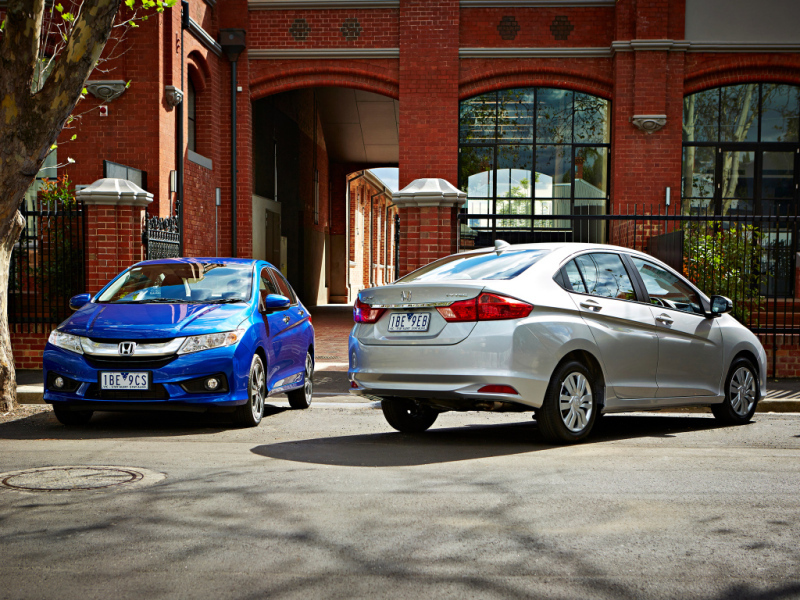Q
how much is honda city in malaysia
In Malaysia right now, the Honda City is priced roughly between RM 84,900 and RM 111,900, depending on the trim level and specs you go for. Keep in mind, these figures can shift a bit due to promotions or regional variations, so your best bet is to hit up your local authorized Honda dealer for the very latest quotes.
The Honda City has long been a solid player in the B-segment sedan game, and for good reason. It's known for being easy on fuel, surprisingly spacious for its size, and reliably dependable – perfect for zipping around town. Under the hood, you've got two main choices: the 1.5L i-VTEC petrol engine, or the 1.5L e:HEV hybrid, which really ups the ante when it comes to fuel efficiency.
Safety-wise, it's not slouching either. The Honda Sensing suite comes standard, packing features like adaptive cruise control and lane-keeping assist to give you that extra peace of mind behind the wheel.
If you're in the market, it's worth checking out its main rivals, like the Toyota Vios or the Proton X50. Each brings something different to the table. The Vios, for instance, has a reputation for bulletproof durability, while the X50 offers compelling value for money and the added practicality of an SUV body style.
And hey, don't forget to factor in the other costs of ownership – things like insurance, road tax, and maintenance. They all add up and can make a big difference to your overall experience in the long run.
Special Disclaimer: This content is published by users and does not represent the views or position of PCauto.
Related Q&A
Q
Does the Honda City 2018 have airbags?
The 2018 Honda City does come with airbags, but the exact setup varies by trim level. Higher-spec models usually get 6 airbags – that's dual front, side, and side curtain airbags. The base version, though, might only have the dual front ones. Definitely check the specific trim's spec sheet before buying. Airbags are a key part of the passive safety system; they work with seatbelts during a crash to really cut down on injury risks. But remember, they only do their best job when you're properly buckled up, and never put a child seat in the front where there's an active airbag. The car also standardizes basics like ABS and EBD, and some versions might throw in VSA vehicle stability control – those help with handling in emergencies. Oh, and it's smart to keep an eye on the airbag system warning light day-to-day. If it lights up, get it checked out ASAP to make sure everything's working right.
Q
What is the fuel capacity of Honda City 2018?
The 2018 Honda City comes with a 40-liter fuel tank, a design that balances daily commuting and short to medium-distance travel needs. Paired with its efficient 1.5-liter i-VTEC petrol engine or 1.5-liter Earth Dreams diesel engine (in select markets), it delivers an approximate range of 500 to 600 kilometers, though actual performance varies based on driving habits and road conditions. Notably, all City models come standard with an ECO assist system, which further boosts fuel efficiency by optimizing throttle response and air conditioning output. The resin fuel tank not only reduces vehicle weight but also effectively lowers corrosion risks. For frequent long-distance drivers, regular tire pressure checks and air filter maintenance are recommended – these small details can lead to even better fuel economy. Competitors like the Toyota Vios offer a 42-liter tank, but real-world range depends on overall engine efficiency, and the City has always been competitive when it comes to fuel-saving technologies.
Q
Is the 2018 Honda City fuel efficient?
The 2018 Honda City does a solid job when it comes to fuel economy. Under the hood, you've got that 1.5-liter i-VTEC engine paired with a CVT transmission. Official figures peg the combined fuel consumption at around 5.4 liters per 100 kilometers. In real-world driving, if the roads are smooth and you keep a steady hand on the wheel, you can usually keep the mixed city-highway fuel use down to about 6 liters per 100 km. That makes it a pretty fuel-efficient pick for daily commutes or longer drives. A big part of that efficiency comes from Honda's Earth Dreams Technology, which boosts fuel economy by optimizing combustion efficiency and cutting down on mechanical resistance. If you're really looking to stretch a tank, there's always Eco mode—it tweaks the throttle response and air conditioning output to save even more fuel. Among its peers, its fuel economy sits comfortably in the upper-middle range, making it a great fit for shoppers who value practicality and cost-effectiveness. Oh, and don't forget—sticking to regular maintenance like changing the air filter and using the right viscosity oil will help keep that fuel economy in check, too.
Q
Does the 2018 Honda City have parking sensors?
The 2018 Honda City does come with parking sensors in some trim levels, but whether a specific model has them depends entirely on its actual specs and configuration grade. Higher-end variants typically feature front and rear parking sensors to help drivers park more safely and conveniently. These sensors use ultrasonic technology to detect distances to obstacles, alerting drivers with audio or visual cues—super handy in crowded city areas or tight parking spots. Beyond parking sensors, many modern cars also offer reverse cameras or even 360-degree surround-view systems, which take parking safety up another notch. If you're looking at a used model or considering upgrading features, it's best to check the vehicle in person or consult a dealer to confirm what's included. You might also want to ask about other driver-assist tech like automatic parking or blind-spot monitoring, as availability can vary between model years and trims.
Q
What is the fuel consumption of Honda City 2018?
The fuel economy of the 2018 Honda City varies by powertrain. The version with the 1.5-liter i-VTEC naturally aspirated engine averages around 5.4 to 5.8 liters per 100 kilometers in combined driving, while the RS trim with the 1.5-liter Earth Dreams turbocharged engine is slightly higher at approximately 6.2 liters per 100 kilometers. Actual figures can fluctuate based on driving habits, road conditions, and maintenance status. Equipped with a CVT transmission that optimizes fuel efficiency, paired with an ECO mode for further savings, this car suits city commuting well. To boost fuel economy, regular maintenance like air filter replacements and using the recommended viscosity oil is advisable, along with avoiding aggressive acceleration or speeding. In its class, fuel efficiency ties closely to engine technology and lightweight design—some competitors achieve lower consumption through direct injection or hybrid systems, yet the Honda City remains popular for its reliability and strong after-sales network. Additionally, keeping tire pressure at the manufacturer's recommended levels and reducing idle warm-up time are small details that can marginally improve fuel economy.
Q
How many airbags are in a Honda City 2018?
The 2018 Honda City comes standard with six airbags in the local market, including dual front airbags, side airbags, and side curtain airbags. This setup offers comprehensive crash protection for occupants and stands as a higher-tier configuration among its peers. As a key part of the passive safety system, airbags inflate rapidly during a collision to cushion impact forces. However, it's crucial to note that their effectiveness is maximized when used in conjunction with seatbelts—always remember to buckle up during daily drives.
Airbag counts may vary across different model years or trim levels of the Honda City. For instance, some entry-level variants might have fewer airbags to keep the price down. It's advisable to check the exact specifications through the official manual or your dealer before making a purchase.
In recent years, many automakers have been enhancing both active and passive safety features, such as adding knee airbags or rear side airbags. That said, the number of airbags isn't the sole measure of a vehicle's safety. Factors like body structure and electronic stability systems are equally important, so consumers should consider their own needs comprehensively.
Q
What is the mileage of Honda City automatic 2018?
The actual fuel consumption of the 2018 Honda City automatic models varies depending on driving conditions and vehicle condition. Official figures show a combined fuel economy of approximately 5.4 to 5.8 liters per 100 kilometers. It's powered by a 1.5-liter i-VTEC engine paired with a CVT transmission, a powertrain that delivers decent fuel efficiency both in the city and on the highway. In daily driving, by maintaining good driving habits—like avoiding sudden acceleration and hard braking, keeping up with regular maintenance, using the right engine oil, and ensuring proper tire pressure—you can get fuel economy closer to or even better than the official numbers. As a popular compact sedan, the Honda City's fuel efficiency has always been one of its selling points, along with its spacious interior and reliability, making it a great choice for family daily use. If you're looking for even better fuel economy, the latest hybrid versions are worth considering, but the 2018 pure gasoline model is still a great value-for-money option, especially well-maintained ones in the used car market.
Q
Does the Honda City 2018 have ABS?
The 2018 Honda City does come standard with Anti-lock Braking System (ABS), a key part of its active safety features. It effectively prevents wheel lock-up, letting drivers maintain steering control during emergency stops, which is especially handy on slippery roads. Beyond ABS, this model typically includes Electronic Brakeforce Distribution (EBD) and Brake Assist (BA) systems too. Working together, these three significantly boost braking stability. It's worth noting that specs can vary by region, but locally sold versions generally meet ASEAN safety standards. For owners, regularly checking brake fluid condition and pad thickness is crucial to keeping the ABS system effective. If the ABS warning light pops up on the dashboard, it's best to head to an authorized service center for diagnosis as soon as possible. In this class, such safety features have become mainstream, and when shopping for a used car, buyers can check the vehicle's VIN plate or use diagnostic tools to confirm the exact specs.
Q
What type of transmission is in the Honda City 2018?
The 2018 Honda City comes with two transmission options: a 5-speed manual (5MT) and a CVT. The CVT variant features Honda's Earth Dreams technology, which optimizes power transfer and shift logic to balance smoothness and fuel efficiency—perfect for city driving. What makes the CVT stand out is its lack of fixed gears; it seamlessly adjusts ratios based on driving conditions, keeping the engine in its optimal rpm range. This not only delivers better fuel economy than traditional automatics but also eliminates shift jerks. For drivers who prefer more control, the manual transmission offers direct power delivery and a more engaging driving experience. It's worth noting that the CVT requires regular changes of its specific transmission fluid for maintenance, while the manual needs attention to clutch disc wear. Both transmissions are widely used across Honda's lineup, boasting high technical maturity and reliable long-term performance. The choice ultimately comes down to your personal driving style and needs.
Q
What size engine is in the Honda City 2018?
The 2018 Honda City comes with a 1.5-liter four-cylinder naturally aspirated engine, codenamed L15A. This engine features Honda's i-VTEC technology, which delivers solid power while keeping fuel economy in check. It puts out 120 horsepower and 145 Nm of peak torque, paired with either a CVT automatic or a 5-speed manual gearbox. The overall performance is smooth, making it well-suited for city driving. This engine offers plenty of low-end torque, perfect for daily commuting, and still maintains decent power response at higher revs, balancing fuel efficiency with driving fun. It's worth highlighting that Honda's i-VTEC technology optimizes engine efficiency across different driving conditions by intelligently adjusting valve timing and lift—that's a real standout feature here. If you're craving more power, keep an eye out for the hybrid versions in later models; they take fuel economy to an even better level. All in all, the 2018 Honda City's engine setup is right up there with the mainstream in its class, ideal for shoppers who prioritize practicality and reliability.
Popular Cars
Model Year
Car Compare
Car Photo
Latest Q&A
Q
What is the rpm of 180 hp motor?
The powerband of a 180-horsepower engine varies by model and intended design. Naturally aspirated engines typically hit peak power at 6,000-7,000 rpm, while turbocharged units like common 1.5T or 2.0T engines often deliver maximum punch between 5,000-6,000 rpm.
Remember the horsepower equation "HP = Torque × RPM ÷ 5252"? That's why modern turbo engines feel punchier at lower revs while sipping less fuel - they're making the same power with fewer revolutions.
Real talk though: you'll rarely need to wring it out to redline in daily driving. Most scenarios call for just 3,000-4,000 rpm for decent shove. Holding high revs constantly? That's just wearing out your engine faster.
Brands tune these differently too - some prioritize low-end grunt for city crawling, while others build power up top for highway passing. Match your right foot's personality when choosing.
Q
What is the rpm of a 10 hp motor?
The RPM of a 10-horsepower (hp) motor depends on its type and intended use. Typically, standard AC induction motors run between 1,450 and 2,900 RPM, while DC or variable-frequency motors may have a wider range—check the nameplate or technical manual for specifics.
In automotive applications, like small generators or auxiliary systems, a 10-hp motor’s speed is often matched to the vehicle’s needs. For example, certain booster pumps or cooling fans might operate between 1,800 and 3,600 RPM.
Keep in mind that horsepower (hp) and RPM aren’t directly linked. HP reflects power output, while RPM depends on factors like pole count and supply frequency (e.g., a 4-pole motor in a 50Hz region runs around 1,440 RPM). If you’re swapping or modifying a motor, always verify the torque curve and load requirements to avoid efficiency losses or damage.
Also, in EVs or hybrids, motors often run at much higher speeds (8,000 RPM or more), though these systems usually rate power in kilowatts (kW)—just remember 1 hp ≈ 0.746 kW for conversion.
Q
How to convert HP into RPM?
To convert horsepower (HP) to RPM, you need to understand their relationship—but there’s no direct conversion since HP measures power while RPM reflects crankshaft speed. Torque bridges the gap. The formula is:
**HP = (Torque × RPM) / 5252** (with torque in lb-ft).
Rearrange it to solve for RPM:
**RPM = (HP × 5252) / Torque**.
For example, an engine making 200 HP at 300 lb-ft of torque hits roughly 3500 RPM at that output.
Keep in mind:
- Engines have unique powerbands—peak HP and torque rarely align at the same RPM.
- Turbocharging, aspiration, and transmission gearing all alter how power translates to wheel speed.
- Real-world performance isn’t just about this math; check the dyno curve and drivetrain setup for the full picture.
Q
What is the rpm of a 60 hp motor?
A 60-horsepower engine's RPM range depends entirely on its design and application. For small gasoline engines, you're typically looking at 6,000-8,000 RPM to hit 60 hp. Diesel mills, with their torque advantage, can achieve the same power at just 3,000-4,500 RPM - check the manufacturer's power curve for exact figures.
Remember, horsepower doesn't scale linearly with RPM. Cylinder count, induction type (naturally aspirated vs. forced induction), and fuel delivery all play major roles. Take turbocharged engines - they'll deliver peak power at significantly lower revs.
For daily driving, most cars operate most efficiently in the 2,000-3,000 RPM sweet spot where power and fuel economy balance out. Want specifics on your ride? Crack open the owner's manual or hook up an OBD scanner. Tuning enthusiasts can always flash the ECU to alter power delivery, but be warned - that warranty won't honor itself, and reliability might take a hit.
Q
How many rpm is a 2 hp motor?
There’s no fixed direct relationship between a motor’s RPM and its horsepower (HP), as rotational speed depends on factors like motor design, load conditions, and power supply frequency. For example, a 2 HP AC motor under a 50Hz power standard (common in household or industrial use) typically has a synchronous speed of around 1500 RPM or 3000 RPM—determined by its pole count (4-pole or 2-pole)—though actual operating speed may drop slightly under load.
For DC or brushless motors, the RPM range can vary more widely, so always check the specs for the specific model. Application also plays a role: a 2 HP motor for pumps or fans usually runs at moderate speeds, while power tools may prioritize higher RPMs.
When selecting a motor, don’t just focus on power—consider torque, efficiency, and rated speed to match real-world needs. For precise figures, consult the manufacturer’s datasheet or a technical expert.
View MoreRelated News

Additional features without extra cost! Honda City RS series upgraded, equipped with a 360° Surround View Camera System
Kevin WongDec 9, 2025

Which one is better, Honda City or Toyota Vios?
AshleyNov 11, 2025

Honda City Hatchback Interior: Surprising Space Inside a Compact Body
WilliamJul 16, 2025

Should You Buy a Used Honda City GM6? – Get Idea Here!
RobertJun 23, 2025

Is it worth buying a used Honda City GM7?
LienMar 7, 2025
View More
















Pros
Cons